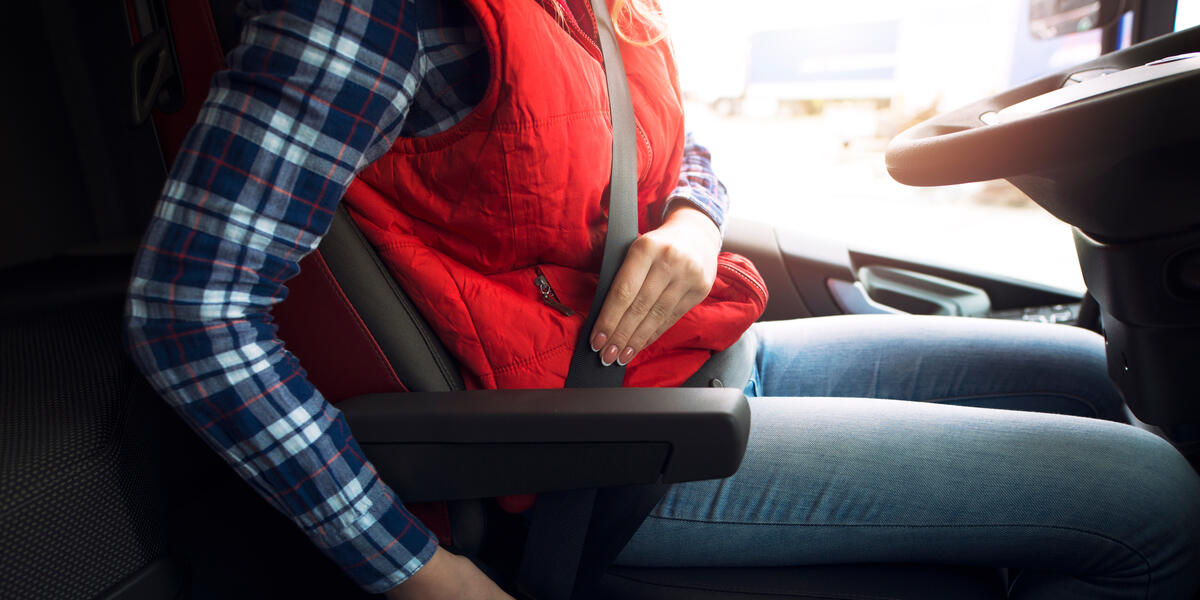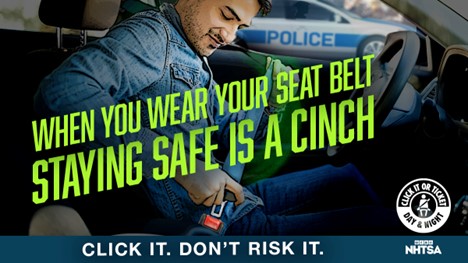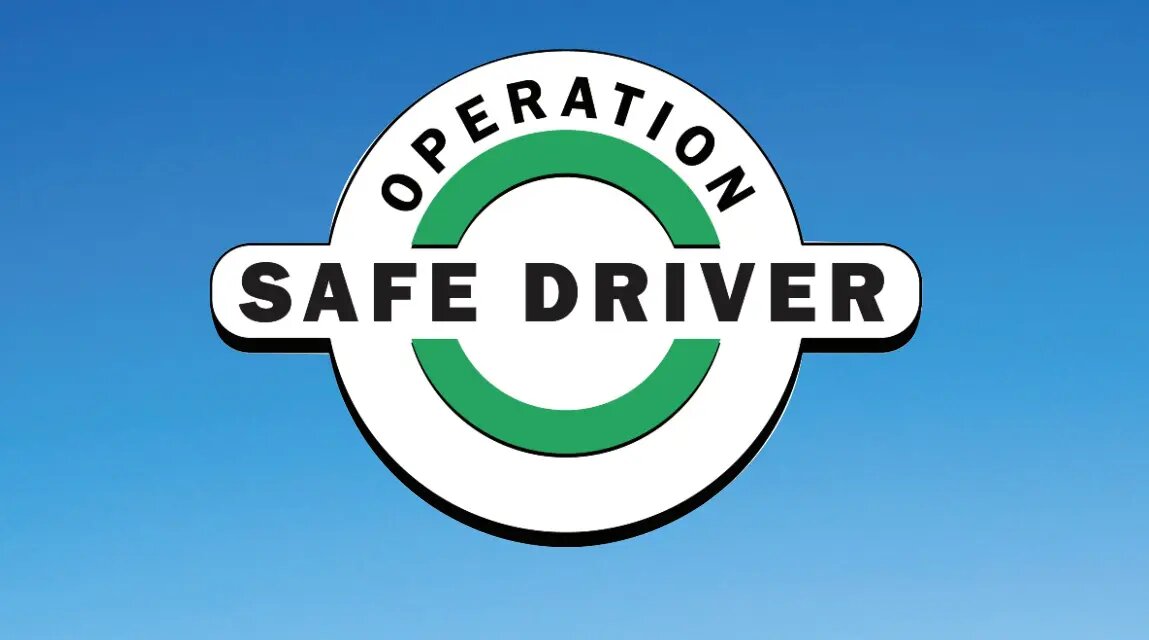Regardless of the vehicle you drive, buckling up is one of the safest choices for both drivers and passengers. As you travel during the Memorial Day holiday, expect to see increased law enforcement on the roads as part of the Click It or Ticket campaign. Running from May 20 to June 2, this initiative emphasizes the importance of wearing seat belts and the legal consequences, including fines, for failing to do so.
Rising Fatalities Due to Non-Seat Belt Use
Fatal crashes on American roads are increasing, with a significant factor being the failure to wear seat belts. The Federal Motor Carrier Safety Administration (FMCSA) is dedicated to supporting and protecting commercial motor vehicle (CMV) drivers, which includes promoting seat belt use among drivers and occupants of CMVs.
FMCSA’s Campaign: Y I Buckle Up
The FMCSA’s campaign, Y I Buckle Up, reminds drivers that wearing a seat belt enhances crash protection, ensures legal compliance, and helps them return home safely. According to the FMCSRs, seat belts are mandatory at every seating position in a property-carrying CMV. Furthermore, 49 CFR 392.16 stipulates that a CMV with a seat belt assembly installed at the driver's seat must not be driven unless the driver is properly restrained.
Alarming Statistics
In 2022, 916 commercial truck drivers lost their lives in crashes. Of those, 635 (69.3%) were not wearing seat belts, according to the National Highway Traffic Safety Administration’s Fatality Analysis Reporting System. This is the second-highest percentage of drivers killed without seat belts since 2017. These startling statistics, highlighted during the FMCSA’s annual research forum on April 24-25, have raised significant concerns about truck driver fatalities involving unbelted drivers.
Importance of Buckling Up
While an estimated 14% of CMV drivers do not wear seat belts, it’s crucial to recognize the many who prioritize safety by always buckling up. Here are some reasons to wear your seat belt:
- It Keeps You Safe: Staying safe on the roads is a top priority for CMV drivers. Safety includes consistently wearing a seat belt.
- It Helps You Make It Home Safely: Returning home to family, friends, or pets matters most.
- The law requires it: CMV drivers pride themselves on safe driving and their vital role in keeping America moving. Compliance with safety policies and the law is a mark of professionalism.
Promoting Seat Belt Safety
Please help keep our roads and the CMV community safe by wearing your seat belt. Sharing this critical safety message is also important—view and download educational materials and other safety tips below.
Tips for Truck and Bus Drivers
Essential Safety Belt Use
Using a safety belt is one of the most cost-effective, easy, and crucial ways to protect CMV drivers. Safety belts also help prevent serious injury to others, as buckled drivers can better control their vehicles in emergencies.
Seat Belt Usage Concerns
When reviewing customer CSA SMS scores, frequent violations for not wearing seat belts are evident. This violation, with a point weighting of 7, negatively impacts the carrier’s “Unsafe Driving” basic score in the CSA SMS. Drivers not wearing seat belts pose an unnecessary risk, leading to potential roadside inspections.
Tips for Increasing Seat Belt Usage:
- Implement a company policy requiring seat belt use in all company vehicles while in motion.
- Define disciplinary actions for seat belt violations in your company policy.
- Order trucks with bright orange or yellow seat belts for better visibility.
- Consider a company seat belt life insurance policy, paying benefits if a driver is killed in an accident while wearing a seat belt.
Does Your Company Driver Policy Address Seat Belt Usage?
Seat Belt Myths
MYTH 1: Safety belts are uncomfortable and restrict movement.
FACT: A Transportation Research Board study found many commercial drivers do not find safety belts uncomfortable or restrictive once adjusted correctly.
MYTH 2: Wearing a safety belt is a personal decision that doesn't affect anyone else.
FACT: Not wearing a safety belt affects family and other motorists since it helps you maintain control in a crash. Federal regulations require commercial vehicle drivers to buckle up.
MYTH 3: Safety belts prevent escape from a burning or submerged vehicle.
FACT: Safety belts can prevent unconsciousness, improving escape chances. Fires or submersion occur in less than 5% of fatal large truck crashes.
MYTH 4: It's better to be thrown clear in a crash.
FACT: Vehicle occupants are four times more likely to die if ejected. In 2004, 168 truck drivers died when ejected from their cabs.
MYTH 5: It takes too much time to fasten a safety belt 20 times a day.
FACT: Buckling up takes about three seconds, totaling only one minute for 20 times a day.
MYTH 6: Good truck drivers don't need to wear safety belts.
FACT: Even good drivers may face crashes caused by bad drivers, weather, mechanical failure, or tire blowouts. Safety belts prevent injuries and fatalities by preventing ejection and protecting the head and spine.
MYTH 7: A large truck will protect you; safety belts are unnecessary.
FACT: In 2022, 634 out of 916 commercial vehicle truck drivers killed were not wearing safety belts.
MYTH 8: Safety belts aren't necessary for low-speed driving.
FACT: In a 30 mph collision, an unbelted person hits the windshield at 30 mph, equivalent to falling from a three-story building.
MYTH 9: A lap belt offers sufficient protection.
FACT: The lap and shoulder belt design keeps a driver securely behind the wheel, improving control and minimizing serious injury or death.
CVSA’s Operation Safe Driver Week: July 7-13
The Commercial Vehicle Safety Alliance (CVSA) has scheduled this year’s Operation Safe Driver Week for July 7-13. This initiative aims to improve driving behaviors through a combination of educational efforts, traffic enforcement strategies, and driver interactions with law enforcement.
During Operation Safe Driver Week, law enforcement officers across Canada, Mexico, and the U.S. will be monitoring both commercial motor vehicle drivers and passenger vehicle drivers for unsafe driving behaviors. These behaviors include:
- Speeding
- Distracted driving
- Following too closely
- Driving under the influence of alcohol or drugs
Drivers found engaging in these behaviors will be pulled over and may receive a warning or citation.
Focus for This Year: Reckless, Careless, or Dangerous Driving
The primary focus for this year’s Operation Safe Driver Week is on reckless, careless, or dangerous driving.
- Reckless Driving: Defined as driving with willful or wanton disregard for the safety of persons or property.
- Careless/Dangerous Driving: Defined as operating a vehicle without due care and attention or reasonable consideration for other motorists or pedestrians.
By targeting these hazardous driving practices, Operation Safe Driver Week seeks to promote safer driving habits and enhance road safety.










